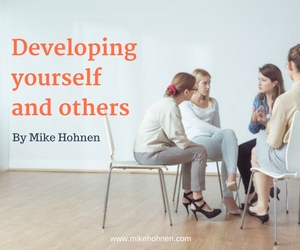 Often teams say to me: “We need to change the culture around here.” And they often have a point, because toxic cultures are very powerful and can often destroy all sort of great initiatives – and as we have seen in a previous post, culture is a huge part of engagement. But it also easily becomes a fluffy excuse for not doing anything. It’s another drama triangle where the big villain is the culture and we are just the victims of this culture. “Well you know, that is just the culture around here. There’s not much we can do about it.”
Often teams say to me: “We need to change the culture around here.” And they often have a point, because toxic cultures are very powerful and can often destroy all sort of great initiatives – and as we have seen in a previous post, culture is a huge part of engagement. But it also easily becomes a fluffy excuse for not doing anything. It’s another drama triangle where the big villain is the culture and we are just the victims of this culture. “Well you know, that is just the culture around here. There’s not much we can do about it.”
But how does culture emerge? What creates the culture?
If you use the four quadrants we introduce in this blog post, then culture is influenced by:
– The attitude and behaviour of each individual
– The system or physical setting that we operate in.
If you are having a meeting with someone, the physical set-up has an influence on how the meeting unfolds. We could have the boss behind a desk looking down on the other party, or we could move to a sofa or we could even go for a brisk walk around the park. Each of these physical systems would obviously create a different feeling in that meeting. And if we run most of our meetings in a certain way … that creates a culture.
(I am known for insisting on having round tables or just circles of chairs for my workshops, and some people think I am being a bit silly in insisting ad nauseum about this. But I know from my 15 years’ experience that the setting creates a different feeling. It sets the tone. And when I am with a new group for the first time, this is the first step in creating a culture. A culture of conversations.)
Another aspect of culture is that, at the end of the day, our culture is the sum of the attitudes and behaviours that are present in our group over time. So first of all, each person needs to ask themself a crucial question: “In what ways am I contributing to this culture that I possibly don’t like?”
Secondly, how does each person behave? What they do and how they do it contributes to the culture. The more dominant or influential someone is in a group, the more their behaviour influences the common culture. This means that top management is key to the culture. After a few years, the culture becomes a mirror or reflection of the values and behaviour of the top person or the top management team.
So what can you do as a management team to influence the culture?
First, be very aware of your behaviour, including what you focus on, what you notice and comment on etc. All these things are cues that the organisation picks up and uses to try to decode what the culture is.
Secondly, change your conversations. More than anything, our culture becomes what we talk about. Take a look at your meeting agendas (and meeting formats) and think carefully about the conversations that you participate in during the day. What are we talking about?
But maybe more importantly, what do we never or very rarely talk about?
I spoke to a manager the other day who had just joined a large service organisation. He told me that when he was recruited, he was told all about the very customer-centric values the company has and how “we always put the customer at the centre of what we do”. “But,” he said, “I have been here for 6 months now and I have not had one single conversation about the customer experience. Every meeting is about financial KPIs. That is all we talk about.”
So, what do we need to introduce into our conversations if we would like to shift the culture? Where and when are we going to make the time and space for that conversation? Those are the crucial questions.
<<<< >>>>
 This spring we ran a series of blog posts around development, developing yourself and others. We have collected and edited those blog posts into a simple e-book that you can download below if you would like to explore this subject further.
This spring we ran a series of blog posts around development, developing yourself and others. We have collected and edited those blog posts into a simple e-book that you can download below if you would like to explore this subject further.